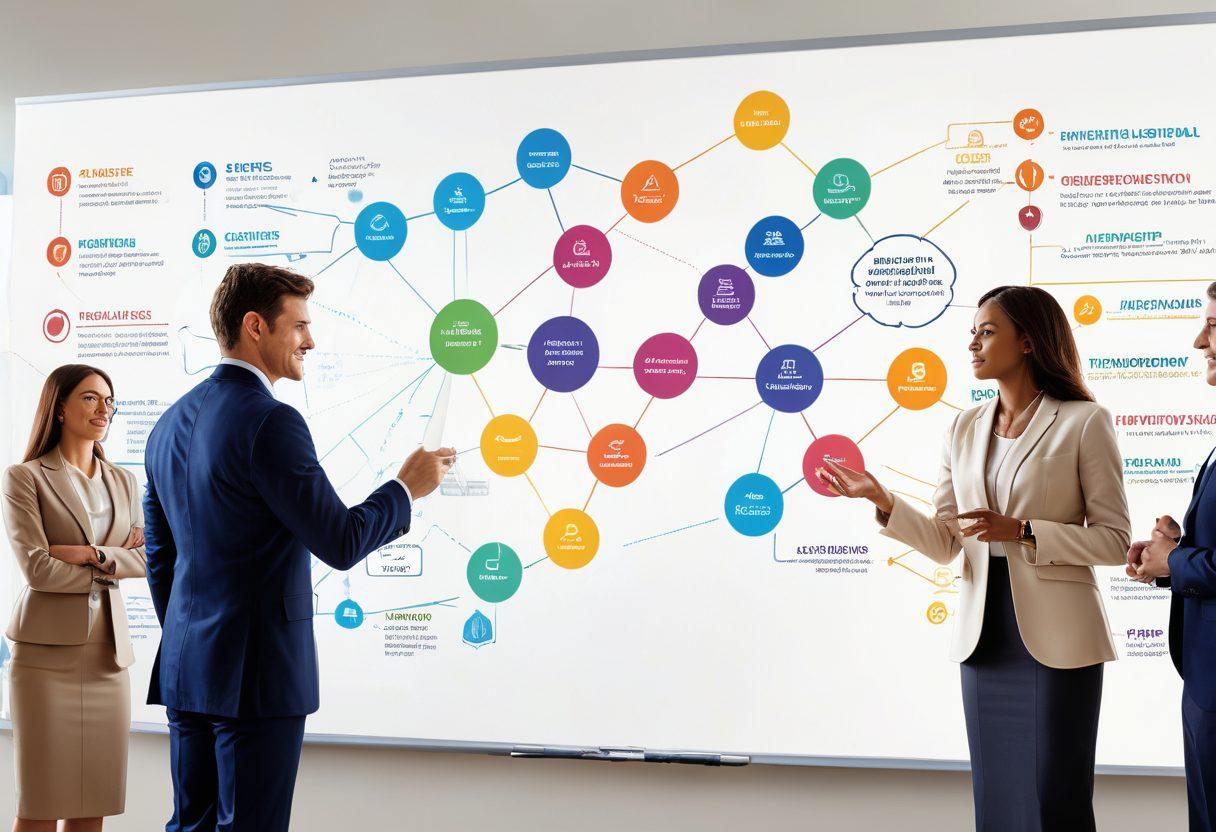Navigating the Challenges of Divisional Structures: Strategies for Effective Decision-Making in Organizations
In the intricate dance of organizational structures, mastering division management is akin to conducting a symphony. Each department, or division, plays its own unique instrument, contributing to the overall harmony of the business. When finely attuned, these divisions can create a melody of strategic decision-making that resonates deeply throughout the organization. However, when discord arises—whether through divisive leadership styles or misguided division of resources—it can lead to chaos. How do we elevate our divisions of labor from mere noise to a cohesive symphony?
To navigate the complexities of divisional management, one must first understand the delicate balance of group dynamics. Each subdivision operates with its unique culture and motivations, which can result in divergence from the overarching organizational goals. It begs the question: how do leaders ensure that each division remains aligned with the company’s vision? The answer lies in fostering transparent communication channels that allow for collaborative decision-making. A wise CEO once said, "When the rhythm of communication is steady, improvisation becomes mastery."
Another key strategy for streamlined decision-making in division management is the formulation of strategic division goals. By defining clear objectives tailored to each business division, organizations can avoid the pitfalls of ambiguity and misalignment. This proactive approach not only empowers teams but also enhances accountability as individuals know what they’re striving for. Have you ever tried to steer a ship without a compass? Establishing these goals acts as your guiding star, indicating the fastest route to organizational success while minimizing the risks of confusion and inefficiency.
Moreover, the allocation of resources plays a pivotal role in effective division strategies. Successful organizations practice an equitable division of resources that aligns with their strategic priorities. This means not only financial budgeting but also investing in training and development for every division. As the renowned management consultant Peter Drucker famously noted, "What gets measured gets managed." By assessing the needs and performance metrics of each division, leaders can make informed decisions that boost overall productivity and morale.
Finally, it’s essential to embrace flexibility within your organizational structure. Division management isn’t a one-size-fits-all approach; it requires adaptability to evolving market conditions and internal dynamics. By allowing divisions to pivot and re-strategize, organizations can avoid becoming stagnant amidst external pressures. The ultimate question remains: Are your divisions equipped to adapt and thrive in an ever-changing landscape? By nurturing a culture of innovation paired with responsive leadership, you can ensure your organization not only survives but flourishes in the competitive arena.
Overcoming Divisive Challenges: Insights into Effective Organizational Structures
In today's corporate landscape, navigating the complexities of divisional structures can feel like steering a ship through a storm. Divisions within organizations often lead to divisive challenges that can hinder progress and stifle innovation. But what if we could transform these challenges into opportunities? Understanding effective organizational structures and the principles behind division management may hold the key to fostering a collaborative and strategic division that thrives on synergy. Are you ready to explore this transformative journey with us?
When we think about organizational structures, we envision a well-oiled machine with each subdivision operating in harmony. However, the reality is often messy. Divergence in goals and misalignment of strategies can lead to a breakdown in communication and create silos within business divisions. Imagine trying to piece together a puzzle where half the pieces belong to another genre altogether! How can we work towards dismantling these divisive barriers and promote group dynamics that enable effective decision-making?
One core concept to consider is the division of resources. Just as artists wield their paintbrushes with care, leaders must allocate resources wisely among various divisions. Strategic division not only promotes efficiency but also ensures that each business division is well-equipped to tackle its unique challenges. As philosopher Peter Drucker once noted, "Efficiency is doing things right; effectiveness is doing the right things." By understanding how to leverage the multiplicity of labor within our divisions, we can make decisions that are not only efficient but effective.
But let’s not shy away from the elephant in the room – communication. Miscommunication often rears its ugly head during divisions of labor. Have you ever been in a meeting where one team has entirely different assumptions than another? The difference in perspectives can lead to confusion and frustration. Creating an environment that encourages open dialogue across subdivisions is essential. Implementing regular inter-division meetings or collaborative platforms can help in bridging the gap between diverse teams, thereby paving the way for cohesive decision-making. How can we encourage a culture of collaboration amidst the challenges?
As we wrap up our exploration into overcoming divisive challenges within organizations, let’s remember that adaptability is key. The world of business is ever-evolving, and so should our strategies. Being proactive in identifying divisive issues and addressing them through thoughtful division strategies can massively improve our organizational structure. As we venture further into this dynamic realm, ask yourself: What steps can you take today to enhance collaboration within your business division? The power to transform lies in our hands, and together, we can navigate these challenges successfully.
Empowering Divisions of Labor: Strategic Approaches for Cohesive Decision Processes
In the fast-paced world of business, organizations often adopt divisional structures to manage their various operations. But what happens when these divisions become too divisive? The reality is that while divisions of labor can lead to specialization and efficiency, they can also create organizational silos that hinder collaboration and effective decision-making. This paradox is at the heart of many modern organizations and it begs the question: how can we empower divisions of labor without losing the synergy that fuels innovation?
Navigating these challenges requires a clear understanding of how the division of resources impacts group dynamics. Imagine a company where each business division functions like a separate island, with minimal communication bridges. Decisions become isolated, leading to divergence from the overall organizational goals. Strategic division is the antidote to this disjointed state. By fostering cohesive decision processes, organizations can turn their subdivisions into well-oiled machines that work towards common objectives. How can companies cultivate this cohesion amidst inherent differences?
One effective strategy is to enhance communication across divisions. When teams understand one another's goals and challenges, they can make decisions that benefit not just their own area, but the organization as a whole. Tools like collaborative platforms and regular inter-divisional meetings can break down barriers. Remember, as author Patrick Lencioni said, 'An absence of conflict is not teamwork; it is a sign of complacency.' Embracing healthy conflict can often lead to robust decision-making and innovation.
Moreover, leadership plays a pivotal role in bind together the divisional threads of an organization. Division management should not only focus on their own goals but also ensure that their teams are aligned with the larger mission. Encouraging employees to participate in cross-divisional projects can bridge the gap between different business units, fostering a culture where diverse perspectives lead to better decisions. A united front can pave the way for balancing divisibility with a collective vision.
Finally, consider the feedback loop as a crucial component of effective decision-making in divisional structures. Companies that actively solicit input from employees at all levels foster a sense of ownership that enhances engagement and loyalty. Creating forums for dialogue where team members can voice their thoughts on division strategies can lead to more informed, inclusive decisions. In this way, organizations can truly harness the power of their divisions, turning what could be isolating into a collaborative and strategic advantage. So, how will YOU empower your division of labor today?


